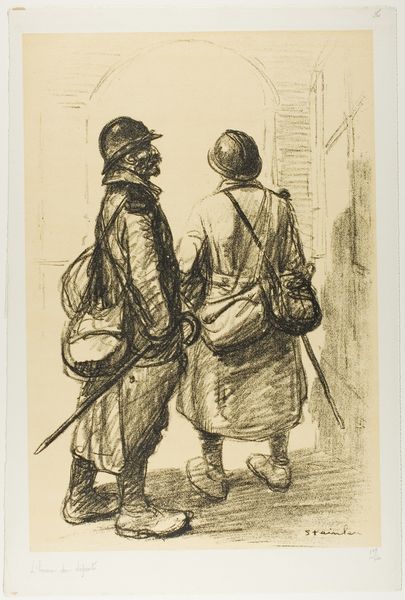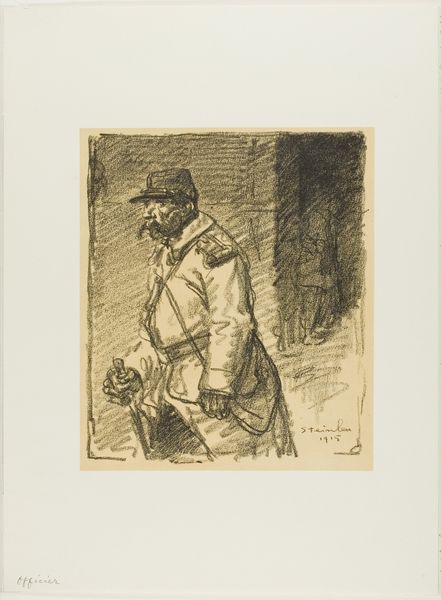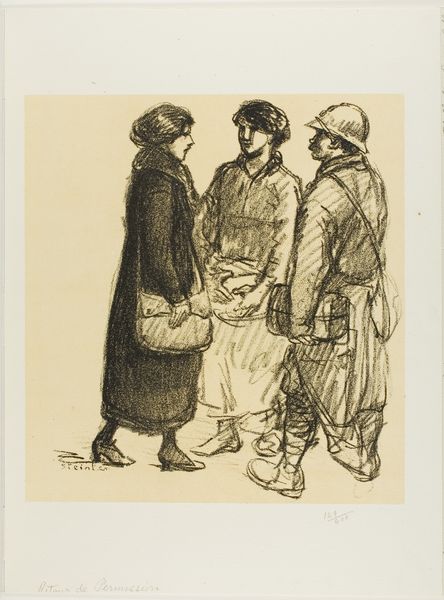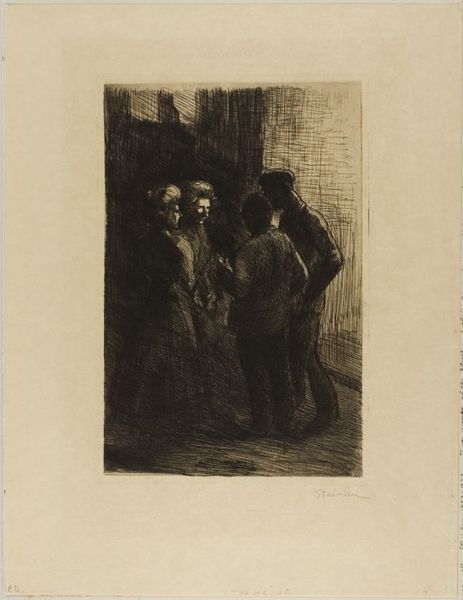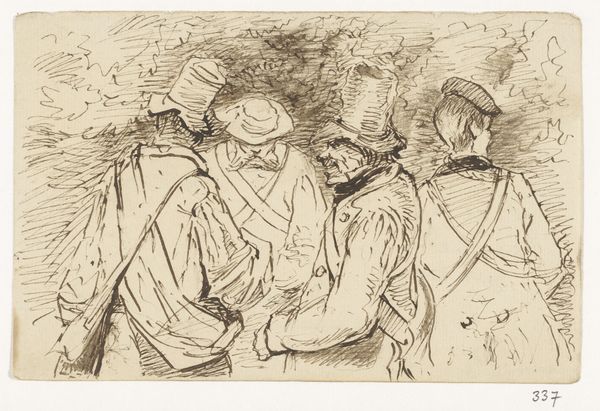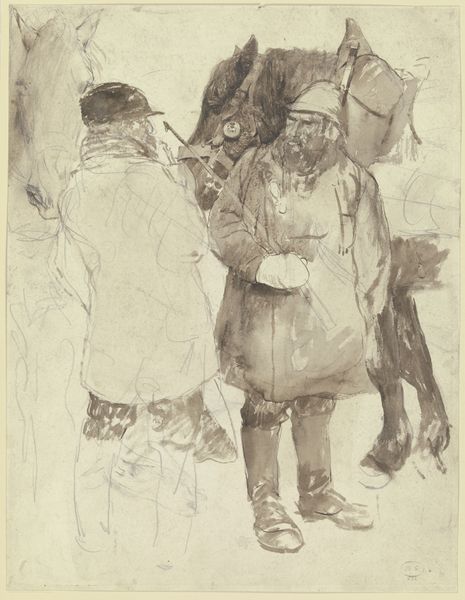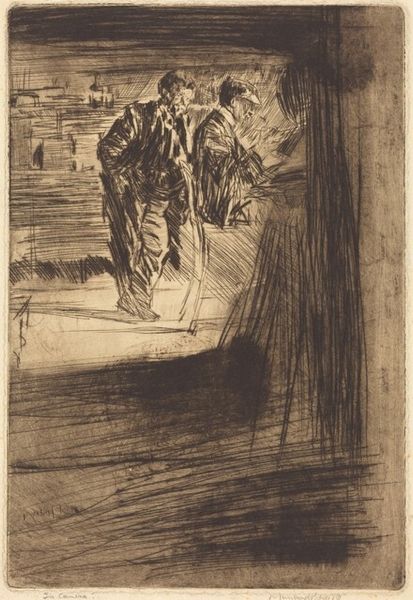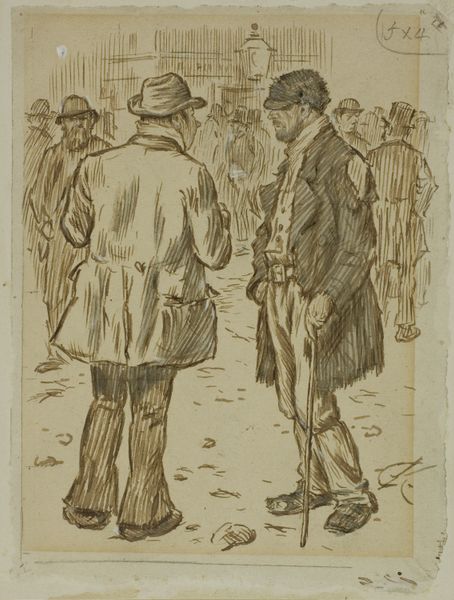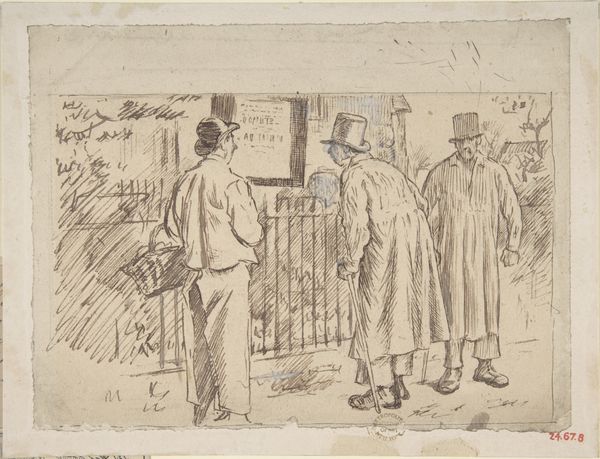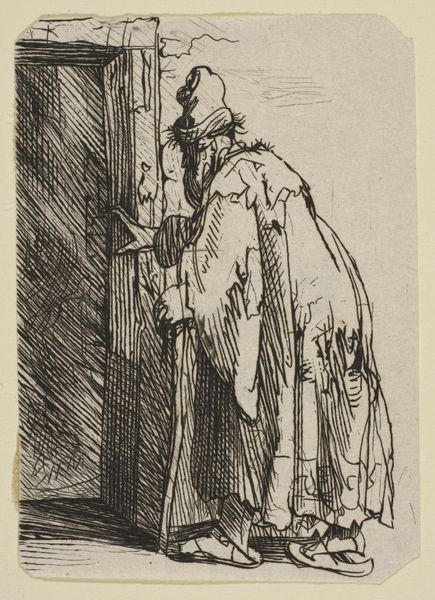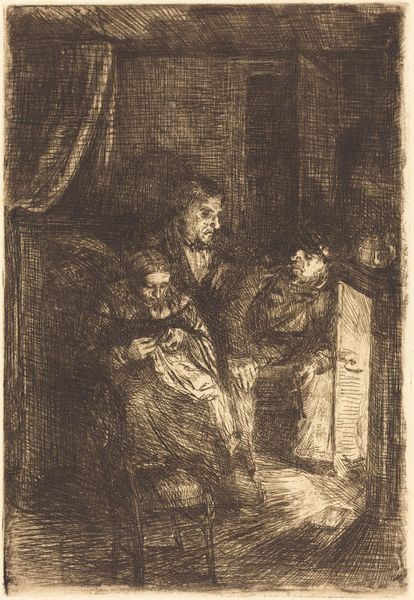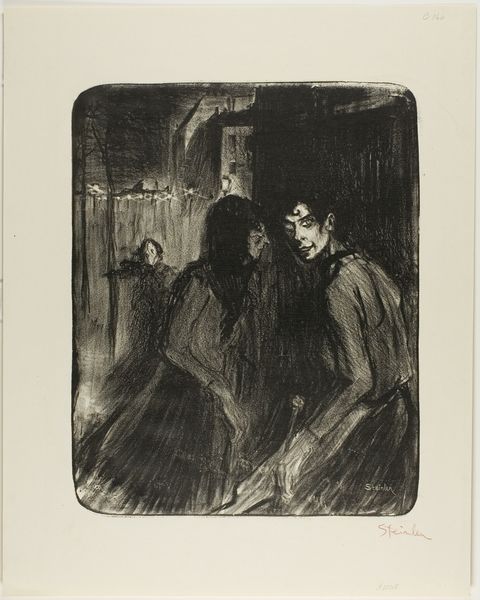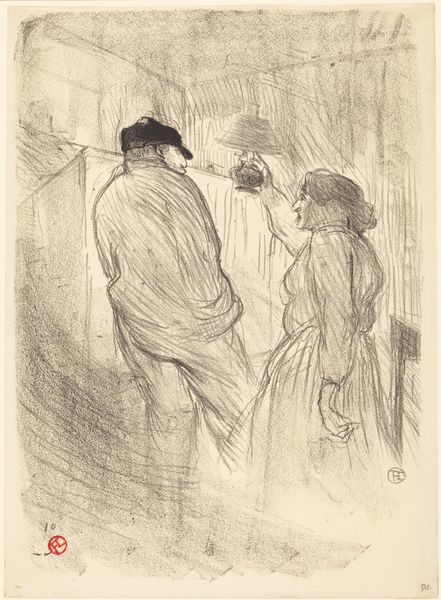
drawing, lithograph, print, paper, pencil
#
portrait
#
drawing
#
animal
#
lithograph
#
ink paper printed
# print
#
dog
#
paper
#
pencil drawing
#
pencil
#
cityscape
#
realism
Dimensions: 398 × 267 mm (image); 549 × 380 mm (sheet)
Copyright: Public Domain
Curator: My first impression is a certain sadness hangs over this drawing. A weightiness that settles in the stomach. Editor: Indeed. We’re looking at "Errant Dogs," a lithograph from 1915 by Théophile Alexandre Steinlen, held here at the Art Institute of Chicago. It’s a cityscape rendered with pencil and crayon on paper. The somber tones definitely evoke a particular mood. Curator: It's like looking at a memory fading. Two figures, probably men, are bundled in coats, almost disappearing into the gritty urban scene. The scrawling style suggests a sort of urban melancholy, perhaps observed firsthand. Are those shadows cast by buildings or… looming anxieties? Editor: The architectural forms, particularly the blocks of buildings rising behind the figures, create a claustrophobic depth. Steinlen employs hatching and cross-hatching to generate volume, particularly evident in the depiction of the coats, and stark shadows which gives the scene this dense feel. Notice the compositional balance—or imbalance—between the shadowed foreground and the relatively illuminated buildings. Curator: And the dogs! You almost miss them tucked in the background. They become these tiny, tragic echoes of the men themselves. Perhaps reflecting how we as humans interact with and observe animals as well. Editor: The dogs’ “errancy,” as suggested by the title, further underlines a theme of displacement and social commentary, typical of Steinlen's oeuvre. Steinlen’s social realism often captured the lives of marginalized communities during La Belle Époque, didn’t it? Curator: Precisely! And by focusing on these two shadowed figures, maybe refugees of some kind, in their muted colors, with those stray dogs. Steinlen seems to ask: where do we truly belong when even the most familiar spaces begin to crumble around us? It reminds us to pause and reflect on our treatment of the vulnerable people, animals, and spaces, within our environments. Editor: Well said! There's something profoundly universal in that urban sense of detachment it brings up in me. Curator: Right! Maybe art's greatest magic is this: sparking a tiny fire of awareness within the heart, showing a truth that has maybe been forgotten for far too long.
Comments
No comments
Be the first to comment and join the conversation on the ultimate creative platform.
